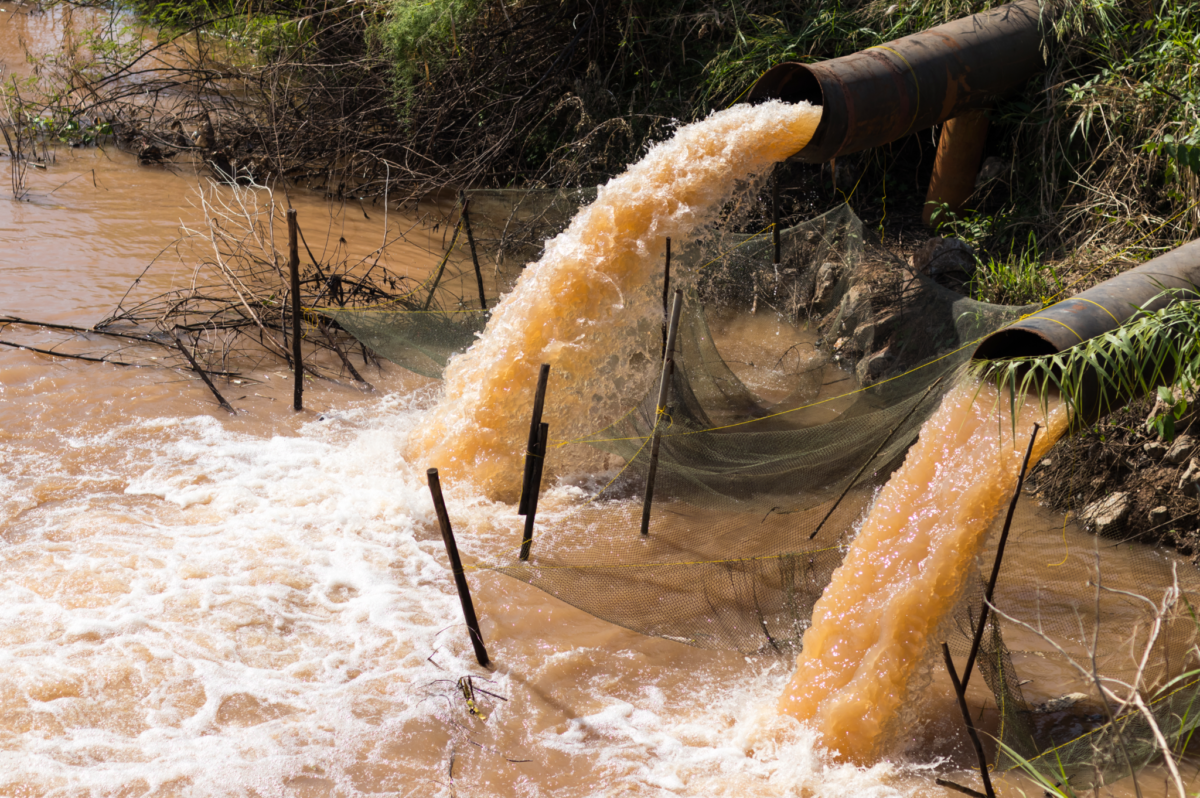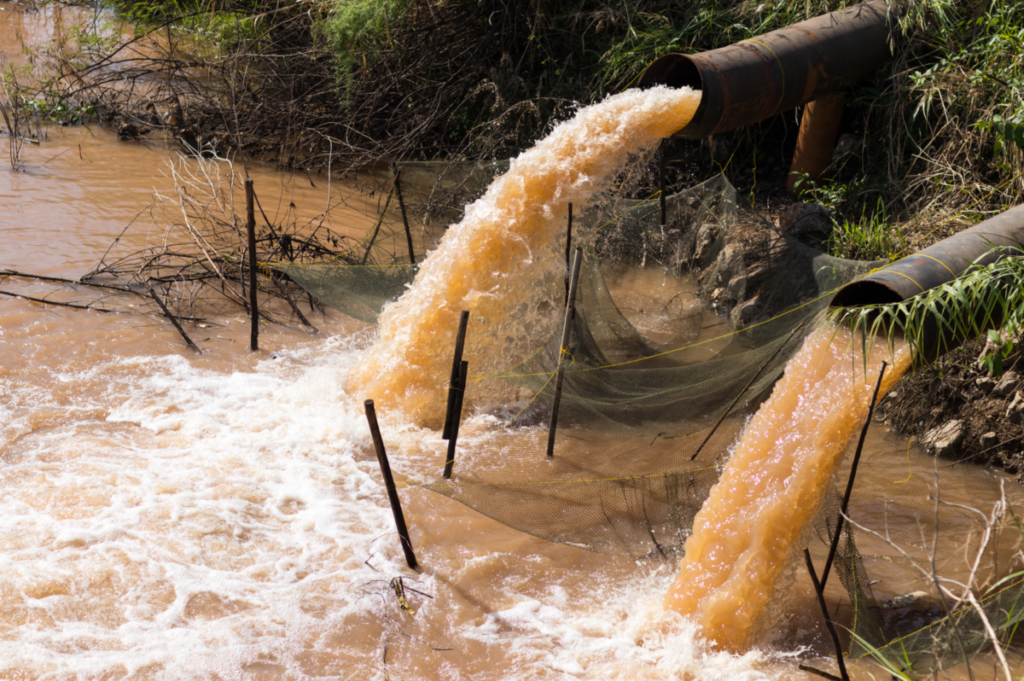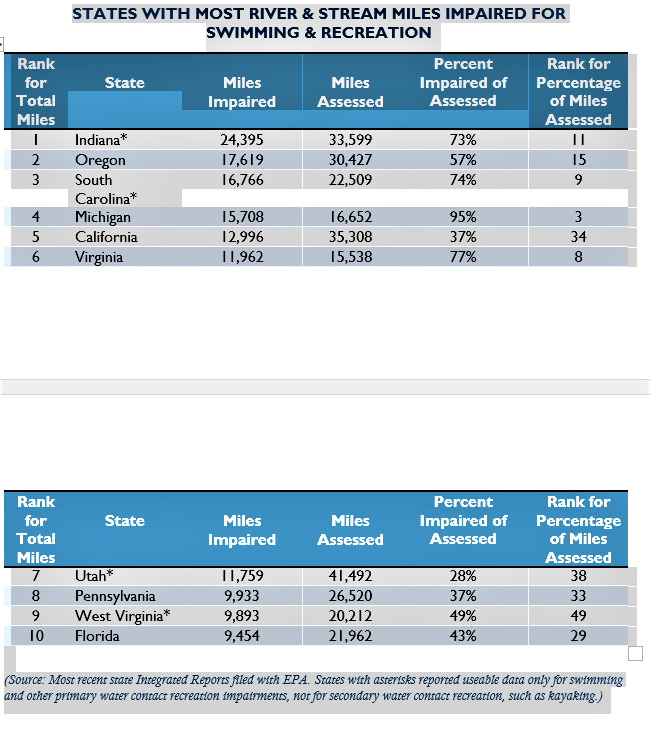More than 50 Percent of Tested U.S. Rivers, Lakes, and Ponds Heavily Polluted
Research shows that more than 50% of tested U.S. rivers, lakes, and ponds heavily polluted. Report finds EPA has “neglected its duty” under the federal Clean Water Act.
More than 700,000 miles of America’s rivers, streams and creeks and more than 11 million acres of lakes, ponds and reservoirs are so excessively polluted that they are classified as “impaired,” according to a new report by the Environmental Integrity Project (EIP).
The tally means that more than 50 percent of assessed river and stream miles and 55 percent of lake acres are so heavily polluted or otherwise impacted that they are not safe for swimming and fishing or as drinking water sources. The same is true for a quarter of assessed bay and estuary square miles, according to the report.
The figures may be a vast understatement of the pollution problem as about 73 percent of river and stream miles have not been studied in more than six years. Regardless, they underscore a significant failure by the Environmental Protection Agency (EPA) and state regulators to enforce the Clean Water Act, enacted 50 years ago.
Intensive animal agriculture is a significant contributor to the contamination of waterways, according to the report, which was released on Thursday by the nonprofit group.
“We have to confront the fact that agricultural runoff is really the leading cause of water pollution in the U.S. today,” said Eric Schaeffer, EIP executive director and former director of civil enforcement at the EPA.
Some comes in the form of runoff of fertilizer from crop land but the larger sources are factory farms raising livestock, Schaeffer said. Though efforts to regulate agriculture are politically unpopular, more has to be done, he said.
“Those farms raise animals under contract to a handful of very large corporations. We need to make those corporations responsible for the problem. They need to assume some of the costs of keeping all of the manure that these operations generate out of the waters,” he said. “The manure carries phosphorous, bacteria, and nitrogen and creates problems across the US. The failure to confront agriculture, that is probably the biggest program failure in the clean water act.”
Climate change is also a factor, warming some waterways to such a degree that aquatic life cannot survive and thrive, and also bringing heavy rains in certain areas that drive pollution off farm fields and city streets and into water, Schaeffer said.
Among the state-specific findings of EIP’s study are the following:
Indiana topped the list of states with the most total miles of rivers and streams classified as impaired (or unusable) for swimming and water contact recreation (24,395 miles).
· Florida ranked first for total acres of lakes classified as impaired for swimming and aquatic life (873,340 acres), and second for total lake acres listed as impaired for any use (935,808 acres).
· California ranked first in the U.S. for most river and stream miles listed as impaired for drinking water (37,209 miles) and third for fish consumption (24,934 miles.)
· Delaware showed the highest percentage of its rivers and streams classified as impaired for any use, with 97 percent of the state’s 1,104 miles of assessed waterways listed as impaired for any use.
· Iowa was found to have 93 percent of its assessed river and stream miles impaired for swimming and recreation (the fourth most in the U.S.) and 83 percent of its lake acres impaired for this (third most.)
When passed in 1972, the Clean Water Act set lofty goals for fishable and swimmable waters and the elimination of all discharges of pollutants into navigable waters. The failure to achieve those goals is due to many factors, according to the EIP report, including a lack of controls for runoff pollution from farms, regulatory failure to enforce pollution limits that are in place; and a failure to update technology-based limits for water pollution control systems used by industries.
See the report here.
Article First Reported by Carey Gillam. Subscribe to Unspun by Carey Gillam on Substack.
Solutions:
At Food Integrity Now we believe in solutions. One solution to cleaning up our waterways is organic regenerative farming which seeks to repair the total agricultural ecosystem, including soil, water, biodiversity–and lock up more carbon and moisture in soils, while minimizing the use of toxic chemicals and synthetic fertilizers. Potentially it can reduce the 75 billion tons of lost topsoil every year. Organic regenerative farming and permaculture can also help to eliminate synthetic chemical use.
In the meantime, make sure you are drinking clean water. If you can, get a whole house filter system, one that filters out chemicals, pesticides, pharmaceuticals, fluoride, VOCs and more. Under sink systems are great or countertops systems. We like AquaTru, which is the only one that Erin Brockovich endorses. Check it out here.
Thank you for supporting Food Integrity Now by visiting our healthstore here. We only support high integrity products. Your support helps fund the costs for doing podcasts, articles and more. Thank you!




0 Comments